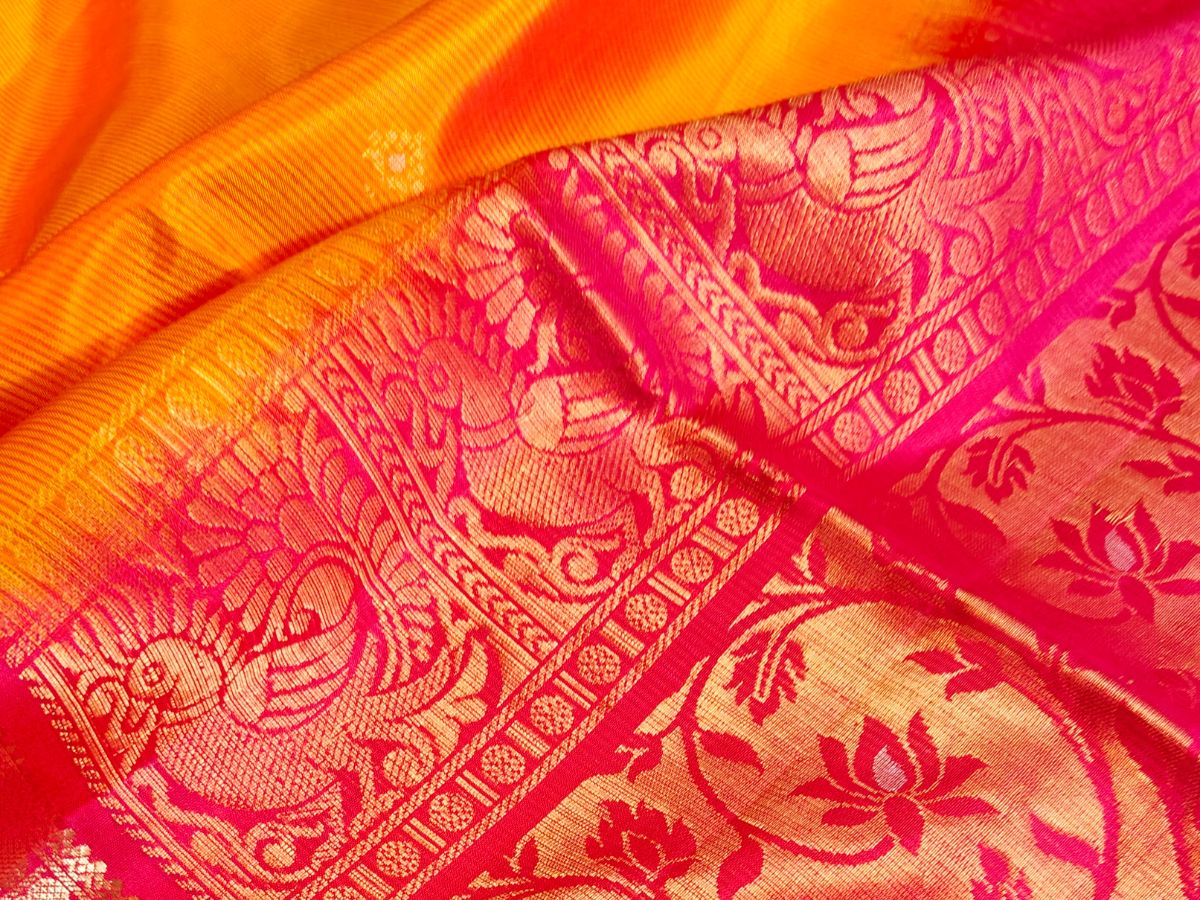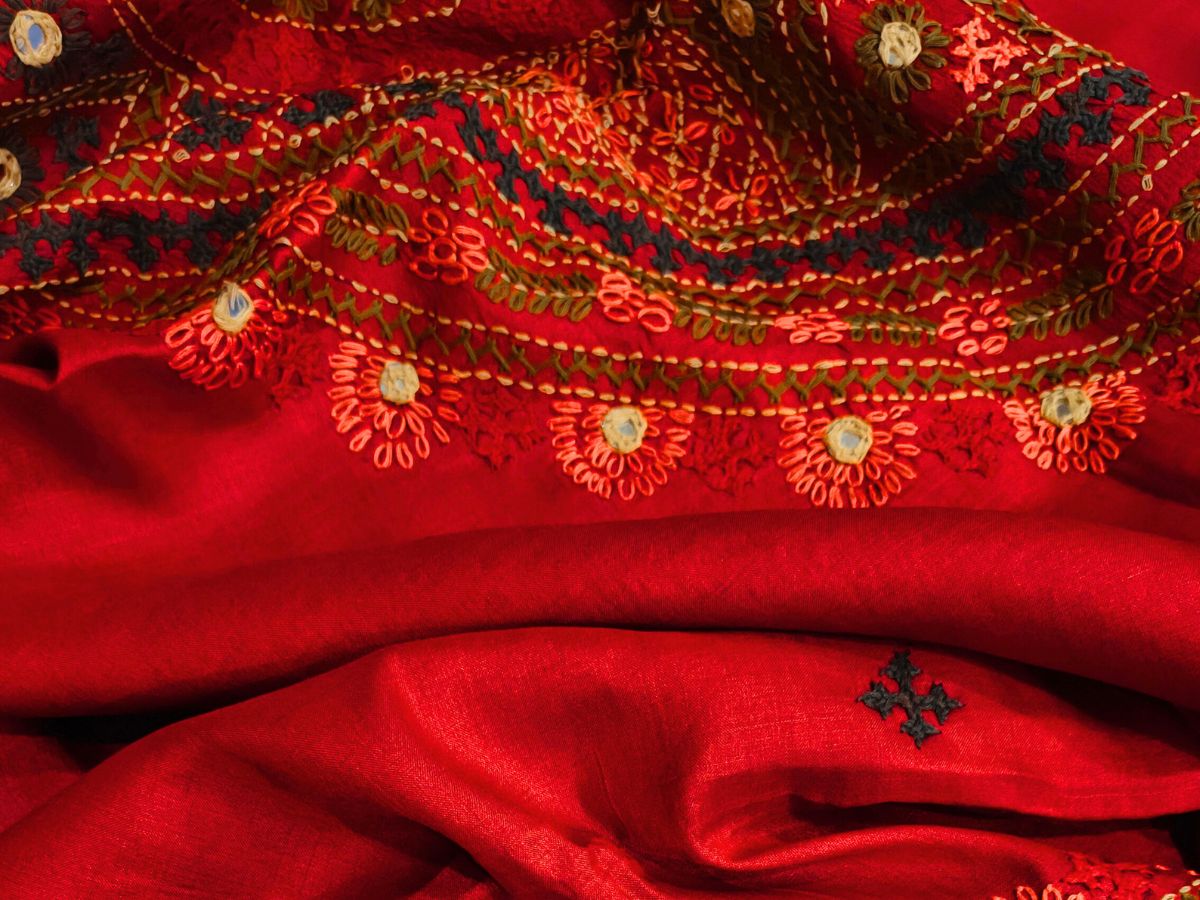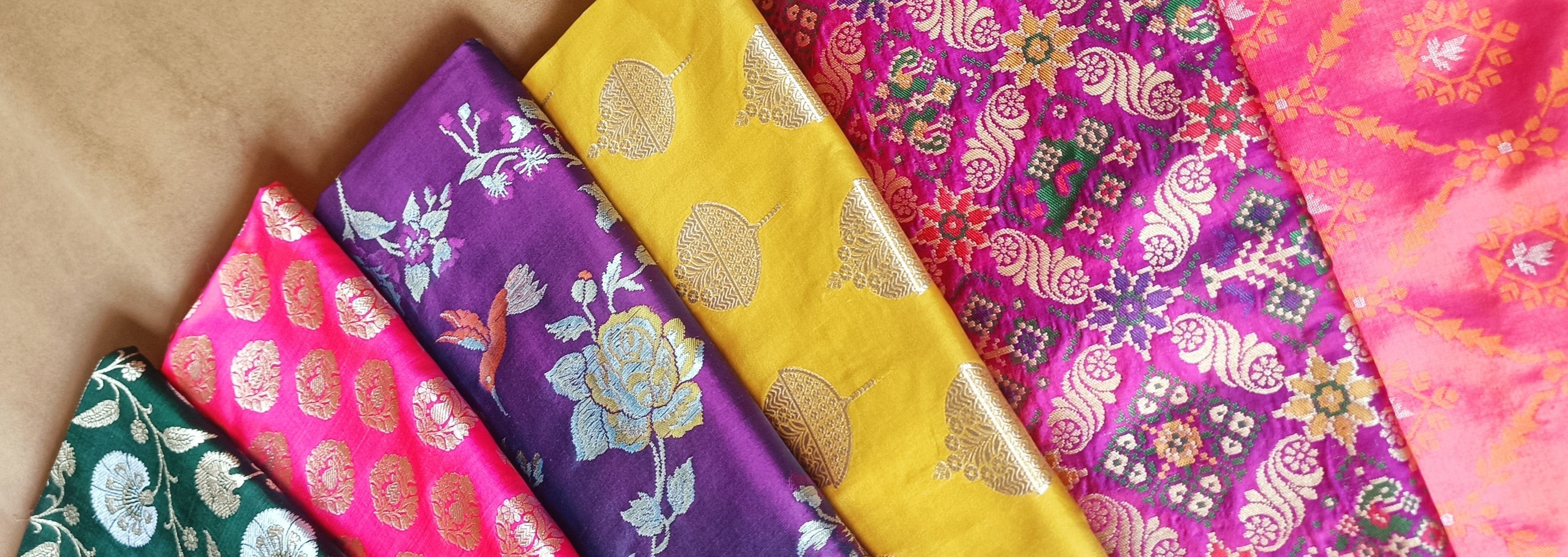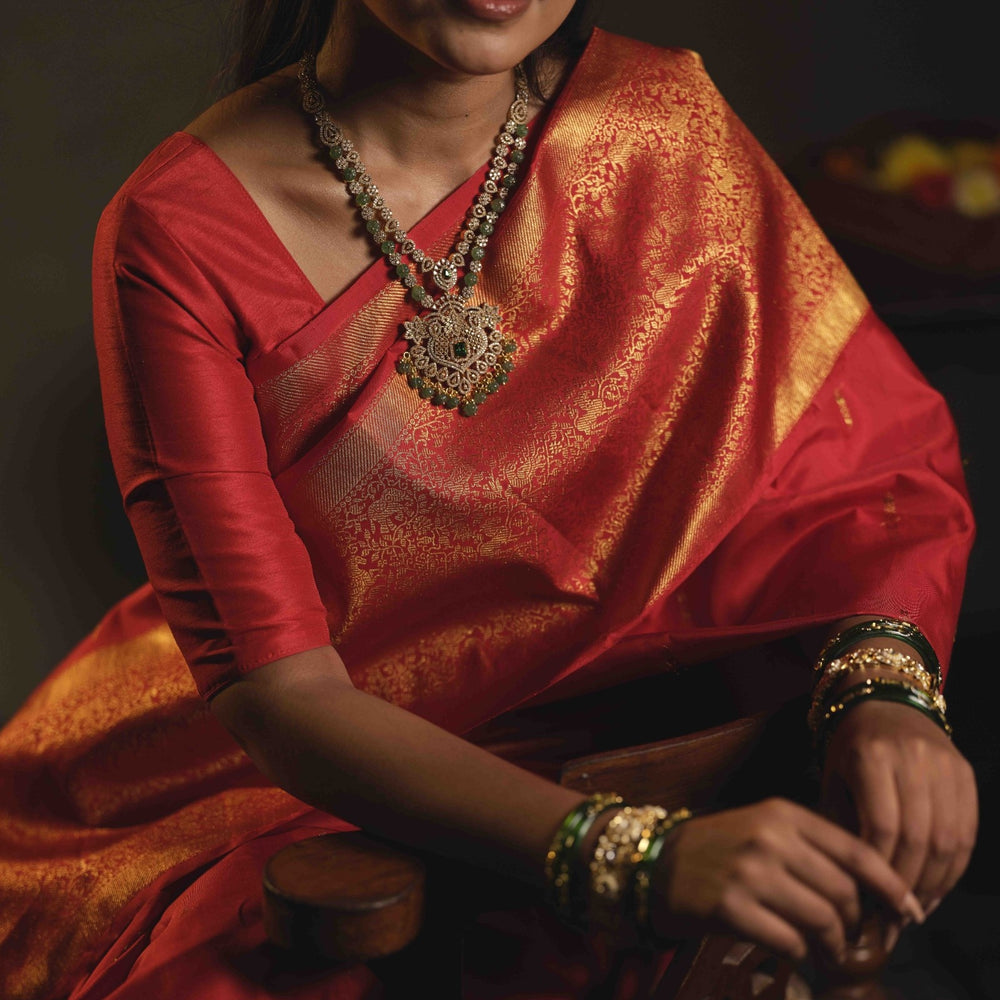From Thread to Treasure: The Magic Behind Dakshinam’s Handloom Silk Sarees
Have you ever worn a saree that felt like poetry on your skin? There’s a reason why Indian handloom sarees have that unmatched elegance—they’re woven with tradition, precision, and soul. Today, we're stepping inside the magical world of Dakshinam’s Silk Saree Workshop, where the clack of looms and the hum of stories come together to create something timeless.
If you've ever wondered what makes handloom silk sarees different from powerloom sarees, or why handloom silk sarees cost more than machine-made ones, you're in for a treat. From the first pencil sketch on paper to the last fold of the finished saree, this journey is nothing short of mesmerizing.
So grab your chai, and let’s unravel the silken secrets of India’s most exquisite drapes!
Pattern on Paper: Where Dreams Begin
Every saree begins not with threads but with a vision. At Dakshinam, silk saree weavers and designers sit together, sketching intricate motifs like Rudraksh, peacocks, or lotus blossoms onto paper.
But here’s the twist—not every pattern can be woven. Unlike printed or machine-made designs, traditional handloom silk sarees must be visualized in the form of threads. Each line in the sketch is a potential thread on the loom.
Designers need to think in weaves. Will that curve look graceful in silk? Can that petal shine in zari? It's both art and math, intuition and engineering.

Graphing the Motif: Precision Meets Tradition
Next comes the graphing process, a beautiful fusion of creativity and precision. This isn’t your regular charting—this is a sacred map.
Each motif is balanced on graph paper, considering thread tension, density, and the size it will appear on fabric. This ensures that when a Rudraksh appears on the saree, it isn’t warped or squished but absolutely perfect.
Think of it as pixel art—but in silk.
This stage is also crucial in answering the common question: How to identify authentic handloom silk sarees? The symmetry and flow of motifs are telltale signs!

Punching the Cards: Old School, Still Cool
Here’s where tech meets tradition—in a 19th-century kind of way.
The graphed designs are punched into cards, just like the OG computers! Each punched card corresponds to a thread, and hundreds of these cards are arranged on a jacquard machine to guide the weaver.
This is one of the most defining elements in the silk weaving process—a physical program for creating art in repeat!
One misaligned card can distort the whole design, so this step is nothing short of sacred.

Colour Planning: A Symphony of Silk
Unlike regular fabrics, handloom silk sarees are not dyed after they’re made. The threads are dyed first, which means the design and colour palette must be locked before weaving begins.
At Dakshinam, artisans often partially dye warp threads to create unique, shaded effects. The body, pallu, and border are dyed separately—think of it as painting three canvases that will eventually align into one masterpiece.
This planning also ensures no two sarees are exactly alike—you’re not just buying a garment, you're collecting art.

Setting Up the Loom: Gearing Up for Magic
This is where things get real. All the zari threads are spooled into bobbins, the dyed threads are warped, and the loom is set up like a stage for a grand performance.
One loom can’t just weave one saree. To maintain consistency, at least four sarees are warped at once. This helps the weaver maintain a rhythm, ensuring even tension and consistent design.
Imagine controlling thousands of threads, all dancing in harmony—it’s nothing short of orchestration!

Testing the Weave: One Thread at a Time
Before weaving the actual saree, the weaver performs a test run to ensure everything aligns: the design, the proportions, the tension. If something’s off, corrections are made—right down to adjusting the punched cards!
This level of personalization is why artisan handloom sarees are worth every rupee. You're not buying from a factory; you're supporting a legacy, a person, a passion.

The Final Weave: Saree, Soul & Story
Depending on the complexity, it takes 5–15 days to weave a single silk saree. That’s over 100 hours of focused craftsmanship!
Once done, the weaver waits for an auspicious time to cut the saree from the loom—because this is not just a product, it's a blessing being released into the world.
Each saree is then folded, finished, and sent off to you—the buyer who now holds a piece of India’s living heritage.
 And just like that—thread by thread, card by card, colour by colour—a stunning silk saree is born at Dakshinam!
And just like that—thread by thread, card by card, colour by colour—a stunning silk saree is born at Dakshinam!
But let’s be real: this isn’t just a saree.
It’s six yards of WOW.
It’s the sparkle of zari, the heartbeat of a weaver, and the sass of centuries-old tradition all rolled into one.
When you wear a handloom silk saree, you’re not just serving looks—
You’re wearing legacy.
You’re supporting sustainability.
And yes, you’re low-key a walking work of art.
So next time someone asks, “Omg, where’d you get that saree?”
Smile, twirl, and say, “It’s Dakshinam, darling. Woven with soul, made for queens.”








